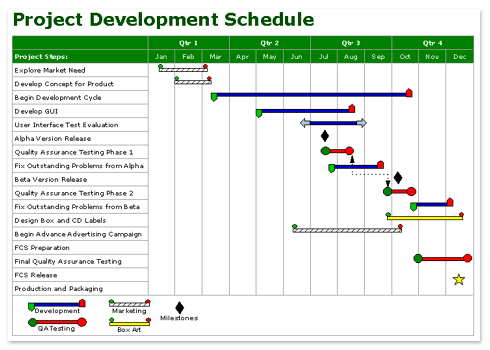1. What is your understanding of CRM?
Customer relationship management (CRM) involves managing all aspects of a customer's relationship with an organisation to increase customer loyalty and retention as well as an organisation's profitability. CRM allows an organisation to gain insights into customers' shopping and buying behaviours.
2. Compare operational and analytical customer relationship management
The two primary components of a CRM strategy are operational CRM and analytical CRM.
Operational CRM supports traditional transactional processing for day-to-day front-office operations or systems that deal directly with the customers.
Analytical CRM supports back-office operations and strategic analysis and includes all systems that do not deal directly with the customers.
3. Describe and differentiate the CRM technologies used by marketing departments and sales departments
There are three primary operational CRM technologies a marketing department can implement to increase customer satisfaction, they are:
- Light generator - compile customer information from a variety of sources and segment the information for different marketing segments. Information sources includes website questionnaires, surveys
- campaign management systems - guides users through marketing campaigns performing such tasks as planning, scheduling and success analysis
- cross-selling - is selling additional products or services to a customer
The three primary operational CRM technologies a sales department can implement to increase customer satisfaction are:
- sales management CRM systems - automate each phase of the sales process
- contact management CRM systems - maintains customer contact information and identifies prospective customers for future sales
- opportunity management CRM systems - target sales opportunities by finding new customers or companies for future sales.
4. How could a sales department use operational CRM technologies?
They could do this through using list generators. List generators are able to provide information on precise features of an organisation e.g. a marketing campaign would have list of customers in a geographic area and it can to arrange the lists of each customer in an area. Other strategies include campaign definition, planning and systems and cost sell or up sell.
5. Describe business intelligence and its value to businesses
Business Intelligence (BI) refers to applications that are used to gather, provide access to and analyse data and information to support decision-making efforts. Business Intelligence is used for any tool that gives a longer length assortment of decision making and encourages types of decision making such as patterns and trends.
 6. Explain the problem associated with business intelligence. Describe the solution to this business problem
6. Explain the problem associated with business intelligence. Describe the solution to this business problem
As businesses increase their reliance on enterprise systems such as CRM, they are rapidly accumulating vast amounts of data. The amount of data being generated is doubling every year and some think it will soon begin to double every month. Data are a strategic asset for a business; if the aset is not used, the business is wasting resources.
If there is too much data an organisation may have limited knowledge on where data is or who their competitors may be.Hence may not be unable to make the best strategic implementation due to insufficient tools to back up data and support decision making to their strategic goals. The solution approach that they could take is business intelligence where it helps an organisation make decisions. Functional areas of an organisation can make decisions where they can be able to see more data analysis and reduce the latency of information in making good decisions
7. What are two possible outcomes a company could get from using data mining?
The two possible outcomes a company could get from data miming is that it can increase profits and allow an organisation to have better sales and confined resources. Another two outcomes include cluster and statistical analysis. Cluster analysis is the searching of equal or non equal but alike data in the many types of databases. However to undertake the cluster analysis, behavioural traits need to be clearly identified through physically partitioning the individual information into set groups. Statistical analysis assesses the data trends through the assistance of a regression analysis and statistics. Statistical analysis gives opportunity to workers in an organisation a large variety of statistical capabilities in order to construct things such as statistical models, the examination of model’s assumptions and validity and the comparison and contrasting the number of models to identify which is the better alternative for an issue within an organisation.
 Reference
Reference
Baltzan, Phillips, Lynch, Blakey. 2010. Business Driven Information Systems. McGraw Hill. Sydney, Australia.
An example of a Cluster Analysis
http://www.blogger.com/post-edit.g?blogID=8243747997517258236&postID=89069071603267511
Execution - M.H. 2010. Data Miming Techniques - Propensity Modelling (Cluster Analysis). http://www.executionmih.com/data-mining/propensity-cluster-association-patterns.php
.gif)

